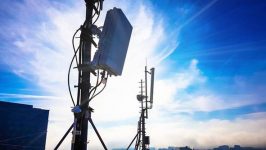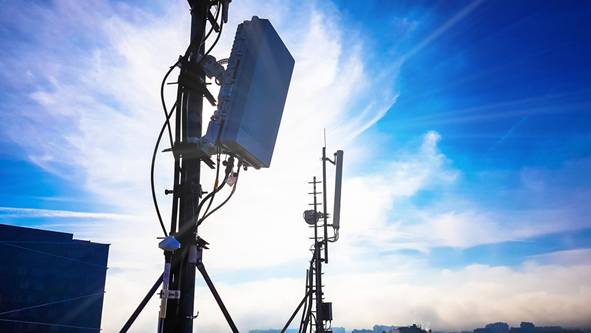
How service providers can reduce the cost of 5G infrastructure
“The data transfer speed of the 5G network is nearly 100 times faster than today’s 4G network, and the latency is about 1/200 lower. All the advantages make 5G technology exciting. This well-designed technology can meet the growing demand to transfer more data at faster speeds.
“
Charles Pao, Senior Marketing Specialist, Sensor fusion BU, CEVA
The data transfer speed of the 5G network is nearly 100 times faster than today’s 4G network, and the latency is about 1/200 lower. All the advantages make 5G technology exciting. This well-designed technology can meet the growing demand to transfer more data at faster speeds.
However, the successful rollout of 5G networks will require the deployment of entirely new infrastructure. Service providers will need to install new equipment and use new technologies, including components such as small cells and multiple-input multiple-output (MIMO) antennas, to support 5G networks. To keep all of the above infrastructure up and running, service providers need a way to troubleshoot potential problems without incurring high maintenance costs.
Need an affordable solution? Motion tracking and sensor fusion couldn’t be more appropriate.
Deploy more 5G infrastructure
Since 4G and 5G have different wavelengths, more 5G small cells and MIMO antennas need to be deployed to cover the same size area as 4G currently does. 5G uses high frequency (GHz frequency range) millimeter wavelengths, which are shorter than 4Gs MHz frequency signals. The shorter wavelengths enable 5G networks to transmit more data than 4G networks.
The downside of 5G networks is that their wavelengths cover a shorter range C about 2% of the 4G coverage. To ensure a stable 5G signal, service providers need to install more cell towers and antennas to transmit signals over greater distances. This requires MIMO antennas to be deployed on every base station as well as on existing public infrastructure poles such as traffic lights and street lights.

(Source: CEVA)
How to make sure your 5G network works
The challenge for service providers is to ensure that all the new infrastructure being built for 5G networks can function properly without incurring extensive on-site service, diagnostics and repair costs. The sheer number of antennas that need to be deployed means that 5G providers need to find a proven way to diagnose and fix problems as they arise.
With such a large number of antennas to install not only cell towers in areas where users are more active, there is a high chance that these facilities will be affected by humans, animals or the weather. And when the direction of the antenna is changed, high-frequency signals cannot be fully received and attenuated. Diagnosing can be tricky if a company can’t provide any information about the location of its own antennas, other than a weakened signal. The case of complete loss of signal is much simpler to handle.
It would be costly for a service provider to schedule a door-to-door service every time the signal weakens, sending a technician on-site to diagnose the problem. Here are a few factors that can quickly add up and drive up owning and maintenance costs:
• Labor hours and wages
• working hours
• Insurance costs for repairing the vehicle
• Vehicle wear and tear
Lower Field Service Costs with Motion Tracking
With a remote diagnostic solution, service providers will be able to reduce the number of on-site services and the costs associated with such matters. The 9-axis inertial measurement unit (IMU) uses software to fuse sensor data together to determine the orientation and absolute heading of the antenna.
While motion tracking can’t be used to remotely diagnose every problem, it certainly helps reduce the number of door-to-door and on-site services required. If the orientation of the antenna doesn’t seem to change, but the signal is lost, then we know it’s not about location. However, if data transmission is slowed due to a change in orientation, at least one technician will need to be dispatched to reorient the antenna. Having antenna location information helps narrow down potential problems without actually going to the antenna location to diagnose.
CEVA utilizes our 9-axis sensor fusion solution to provide accurate absolute orientation. With the expansion of 5G networks in various countries, CEVA also has technology specifically designed to assist with installations. Our planar magnetometer calibration technology allows technicians to calibrate the antenna orientation at the location where the antenna will eventually be installed. We know that infrastructure can be cumbersome to use, so a simple 90-degree steering device can give you an accurate absolute heading. Further simplification of the installation process will increase the likelihood that the installation will be done correctly, enabling more consistent performance and tracking, and doing more than one thing.
CEVA develops motion sensor solutions for all types of use cases and applications including emerging applications supporting 5G and IoT (Internet of Things). Sensor fusion software allows us to accurately track motion, obtain long-term orientation data, and provide manufacturers and service providers with valuable data to refer to when installing any IoT device in the field in a real-world environment.
The Links: NL6448BC33-63D TPS51219RTER INFIGBT



